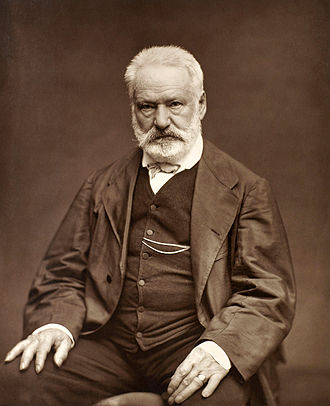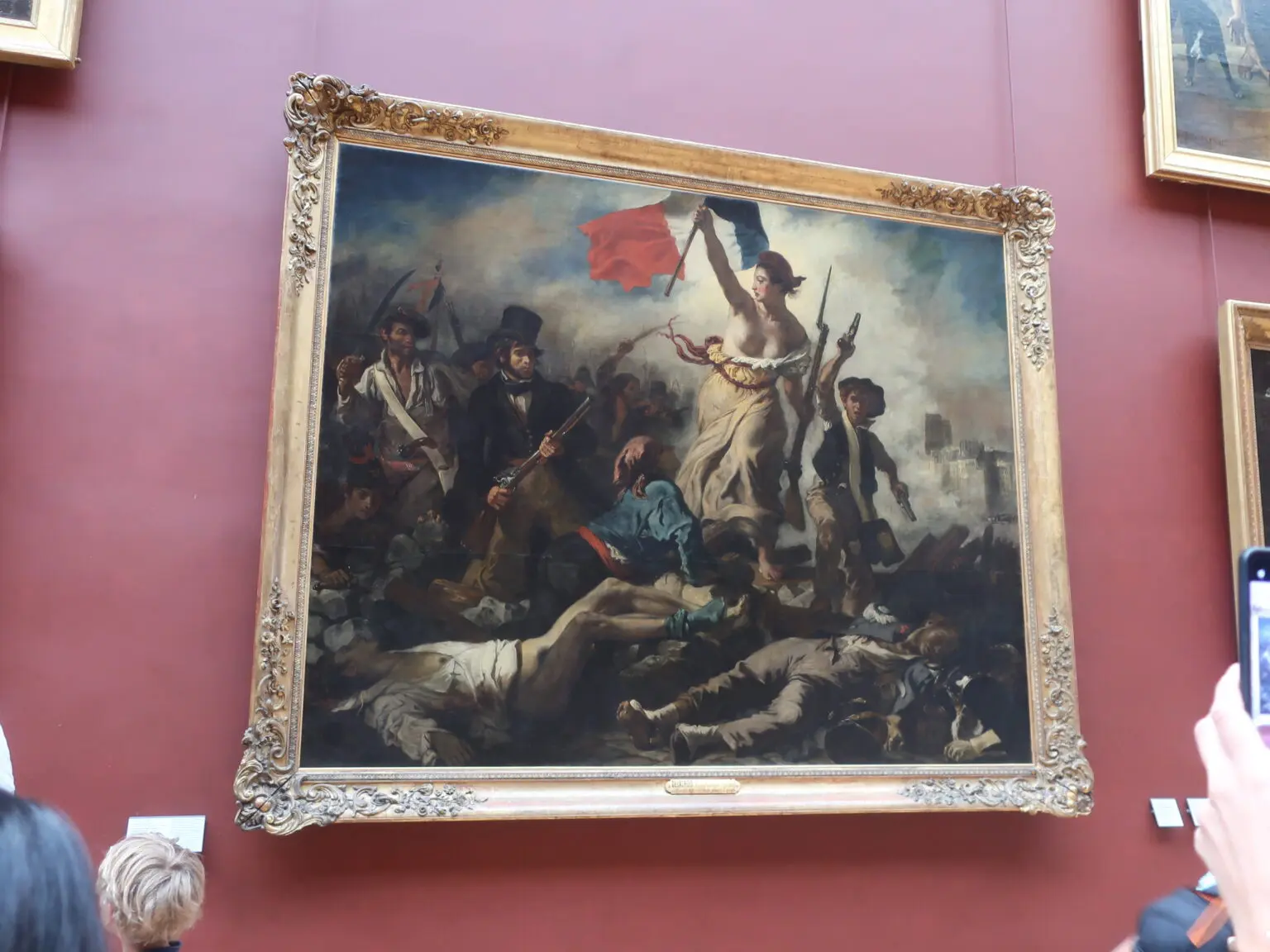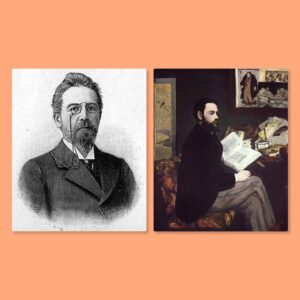『レ・ミゼラブル』解説記事一覧~キャラクターや時代背景などレミゼをもっと知りたい方へおすすめ!

『レ・ミゼラブル』をもっと楽しむために!お役立ち解説記事一覧

前回の記事「『レ・ミゼラブル』おすすめ解説本一覧~レミゼをもっと楽しみたい方へ」ではレミゼをもっと知るためにおすすめな参考書をご紹介しましたが、今回の記事ではこれまで紹介してきた「レミゼをもっと楽しむためのお役立ち記事」をまとめていきたいと思います。
レミゼは原作よりも、映画やミュージカルで楽しむ方がほとんどだと思います。
私も原作からスタートしたものの、やはり何度も観るのはミュージカル映画です。

映画やミュージカルは長大な原作をぎゅぎゅっとまとめたものになるので、泣く泣くカットされた部分も多々あります。ですがそうした部分にこそそれぞれのキャラクターの背景や個性がより深く描かれています。
そうした背景を知ることでより映画やミュージカルを楽しむことができます。
以下に紹介する記事は原作を参考に、ミュージカルではなかなか知ることのできないレミゼのお役立ち情報を紹介していきます。
これらを読むことでもっともっとレミゼを楽しめること請け合いです。ぜひ参考にして頂ければ幸いです。
ジャン・バルジャンを救ったミリエル司教とは?

わずか一片のパンを盗んだために、19年間の監獄生活を送ることになった男、ジャン・バルジャン。
ジャン・バルジャンという名を聞けば、おそらくほとんどの人が「あぁ!聞いたことある!」となるのではないでしょうか。この人ほど有名な主人公は世界中見渡してもなかなかいないかもしれません。
ミュージカルや映画では、ジャン・バルジャンの徒刑場でのシーンからこの物語はスタートします。
そして釈放されたジャン・バルジャンが放浪し、民衆からひどい扱いを受け絶望していた時に出会うのがこの記事でご紹介するミリエル司教です。
不信や憎しみで荒みきっていたジャン・バルジャンを温かく迎え入れ、盗みを犯したジャン・バルジャンに銀の燭台まで与えた司教の慈悲によってジャン・ヴァルジャンは改心します。
ミュージカルや映画では時間の都合上、割とさくっと進んでしまうのですがこれを原作で読んでいくと驚きの展開が待っています。
ミリエル司教は実はものすごく重要な人物です。この人物のことを知るとジャン・ヴァルジャンに対する見方も変わってきます。ぜひ知って頂きたい人物です。
ジャン・バルジャンを救ったミリエル司教とは?鹿島茂著『「レ・ミゼラブル」百六景』より
ジャン・バルジャンの過去~なぜ彼は逮捕されたのか

この記事ではパン一個を盗んだことで19年服役したジャン・バルジャンの過去を見ていきます。
当時のフランスは貧富の差が拡大し凄まじい貧困が蔓延していました。『レ・ミゼラブル』はこうした人々から生まれてきた物語でもあったのです。そしてその主人公ジャン・バルジャンがこうした環境から生まれてきたというのは非常に大きな意味があります。
ジャン・バルジャンはこのような極度の貧困に苦しみ、家族が餓死しないためにパンを盗んでしまうのです。
この記事ではそんなジャン・ヴァルジャンの過去について詳しくお話ししていきます。
ジャン・バルジャンの真の改心~ミュージカルでは語られないプチ・ジェルヴェ事件

19年の徒刑生活で身も心も荒みきっていたジャン・バルジャンはミリエル司教の慈しみに触れ改心しました。
ミュージカルでは銀器を贈られ、見逃してくれたことでジャン・バルジャンはこれまでの生き方を悔い、新たな人生を生きることを誓いました。
ですが原作ではここからさらにもう一つの事件があったのです。ジャン・バルジャンが真に改心したのは実はその事件がきっかけだったのです。
ミュージカルでは時間の関係上このエピソードはカットされてしまいましたが、原作ではこの事件は非常に大きな意味を持った事件です。
この事件もぜひ注目したい事実です。
ジャン・バルジャンの真の改心~ミュージカルでは語られないプチ・ジェルヴェ事件
ファンテーヌはなぜ悲惨な道を辿ったのか~『I Dreamed A Dream(邦題 夢やぶれて)』

ファンテーヌは歌のタイトルの通り、夢破れて悲惨な最期を遂げます。そして残されたのが彼女の愛する娘、コゼットでした。このコゼットとジャン・ヴァルジャンの物語がレミゼで語られていくことになります。
ユゴーはこうした貧しい女性の問題、捨てざるをえなくなった子供たちの問題をこの作品で表現しています。ファンテーヌの悲惨は彼女一人だけでなく社会全体の悲惨でもあったのです。ユゴーはそんな社会を変革したいという願いもこの作品に込めていたのでありました。
ファンテーヌを知ることは当時のフランス社会が抱えていた問題を知ることにもなります。
こうした背景を取り込みつつミュージカルや映画の短い時間でそれを表現した製作陣のすごさには恐れ入るばかりです。ますますレミゼが好きになりました。
ファンテーヌ『I Dreamed A Dream(邦題 夢やぶれて)』彼女の恋と悲惨な運命とは
コゼットはなぜテナルディエ夫妻に預けられたのか

コゼットといえば言わずと知れた『レ・ミゼラブル』の顔というべき存在です。下のポスターでお馴染みですよね。

コゼットはもはや世界で最も有名な少女と言っても過言ではありません。
困窮に苦しむファンテーヌの手を離れてテナルディエ家に預けられたコゼット。彼女はまるでシンデレラのようにこき使われ、いじめられていたのでした。ミュージカルや映画を観た人はもしかしたら次のような疑問を持ったかもしれません。「なんでテナルディエみたいな悪党の家にわざわざコゼットを預けてしまったのか」と。
たしかに、これはよくよく考えてみたらそうですよね。コゼットがなぜテナルディエのもとに預けられることになったのか、その経緯は気になるところです。また、そもそもファンテーヌとテナルディエはどこで接点があったのでしょうか。
こうしたこともこれまでの記事で紹介したミリエル司教やジャン・ヴァルジャン、ファンテーヌと同様、原作ではしっかりと書かれています。
コゼットはなぜテナルディエ夫妻に預けられたのか~鹿島茂著『「レ・ミゼラブル」百六景』より
ジャン・バルジャンはなぜマドレーヌ市長として成功できたのか

徒刑囚として19年も服役したジャン・バルジャン。
そんな荒みきっていた彼はミリエル司教と出会い、新たな人生を歩むことを誓います。
そしてその後舞台上に登場するジャン・バルジャンはマドレーヌという名前で生活し、この工場の工場長、そして市長にまでなっていたのでした。
パリの貧困層出身だったジャン・バルジャンがなぜここまで成功することができたのか。よくよく考えれば不思議ですよね。徒刑囚だった頃とはまるで別人です。
今回の記事ではなぜジャン・バルジャンがここまでの成功を遂げることができたかをお話ししていきます。
ジャヴェールこそ『レ・ミゼラブル』のもう一人の主人公である!愛すべき悪役ジャヴェールを考える

『レ・ミゼラブル』の悪玉、ジャヴェール。
主人公ジャン・ヴァルジャンを追いかけ苦しめる悪役として描かれたジャヴェール。
ですが彼の最後のシーンを読むと、そんな彼の振る舞いの意味合いがまったく変わってきます。私は『レ・ミゼラブル』の中で、このジャヴェールの壮絶な最期が最も心に残っているシーンとなっています。
映画ではそのジャヴェールのシーンが少し物足りなく、なぜジャヴェールが苦しみ、そして死を選ぶのかが少しわかりにくい展開になっています。
映画のレビューを見ても、そのような感想が多くありました。
というわけでこの記事ではジャヴェールという男が本当は一体何者なのだろうかということを考察していきます。
ジャヴェールこそ『レ・ミゼラブル』のもう一人の主人公である!愛すべき悪役ジャヴェールを考える
ジャヴェール(ジャベール)はなぜ死んだのか。『レ・ミゼラブル』原作からその真相を探る。

映画やミュージカルをご覧になった方にはもうお馴染みのジャヴェール。
物語の後半、バリケードで彼はジャン・ヴァルジャンに命を救われます。
そのショックで、もはや彼はジャン・ヴァルジャンを無意識に「きみ」と呼びかけるようになっていました。
彼の心に何かとてつもない衝撃が与えられていたのです。
そして瀕死のマリユスを担いで地下水道から脱出したジャン・ヴァルジャンを待ち構えていたジャヴェール。
映画ではここでの会話の後、すぐに絶望し、苦悩の歌を歌い、川に身を投じます。
しかし原作ではジャン・ヴァルジャンの願いを聞き入れ、まず馬車を呼び、マリユスを家まで送り届けます。
かつての彼なら問答無用でひっ捕らえ、ジャン・ヴァルジャンを警察に突き出していたことでしょう。
しかし彼はあろうことか犯罪人のジャン・ヴァルジャンを馬車に乗せ、彼の願いを聞き入れマリユスを送り届けたのです。
さらにジャン・ヴァルジャンの家まで彼を送り、ここで待っていると言っておきながら、彼はそっと姿を消します。
ジャン・ヴァルジャン自身も捕まることを受け入れていた中、これには彼も驚きます。
あの厳格なジャヴェールが、罪人を許し、解放してしまったのです。
そしてこの後に、善悪に引き裂かれたジャヴェールはそれこそ死ぬほど葛藤し、自身の存在意義、これまでの人生、これからの人生について苦しむのです。
この苦しみの描写は鬼気迫るものがあります。文庫版にして20ページ、それが延々とつづられます。ここにこそジャヴェールの死の真相があるのです。
その一部をここで抜粋してもきっとそれは不十分で断片的なものにしかなりません。やはり20ページにもわたる彼の葛藤を知らなければその真の理由はわかりません。
『レ・ミゼラブル』の原文を20ページもなんて読めないよとお思いのあなた。
ここは騙されたと思ってこの記事に書かれた原文をまず試しに読んでみてください。
レミゼは文庫でおよそ2500ページ超の大作です。そのうちのたった20ページだけと思ったら、なんかいけるような気がしてきませんか?
しかもこのシーンは第5巻の後半にあるシーンです。普通に読んでたら1巻からは遠い遠い道のりです。
全部読むのはきついなぁと足踏みされていた方にはこのシーンはきっと永遠に出会うことがない場面かもしれません。
そういう意味でもここでジャヴェールの最大の見せ場であるこのシーンを読んでみる価値は十分あると思います。
読んでみれば意外と読みやすいことにきっと驚くと思います。古典だから難しいという先入観もきっと壊れるのではないでしょうか。
この記事ではそんなジャヴェールの最期を原作に沿って見ていきます。
ジャヴェール(ジャベール)はなぜ死んだのか。『レ・ミゼラブル』原作からその真相を探る。
ファンテーヌの連行、釈放事件はユゴーの実体験だった~ユゴー『私の見聞録』より

ユゴーの『私の見聞録』という本にはレミゼの重要人物ファンテーヌのモデルになった女性が登場します。
ファンテーヌが無礼な男から服に雪を入れられ、それに反撃したが故に連行され牢獄行きを宣告されたシーンはレミゼを観た人には強烈なインパクトがあったと思います。そして作中でそんなファンテーヌを救ったのがジャン・バルジャンでした。
実はこの「捕らえられた娼婦と彼女を解放する紳士」という構図はユゴー自身が実際に体験した出来事がモデルになっているのです。
ユゴーはこれとまさに同じ場面をレミゼ執筆に先立つ1841年に体験していたのです。
この記事ではそんなファンテーヌのもとになった出来事をこの本から見ていきたいと思います
ファンテーヌの連行、釈放事件はユゴーの実体験だった~ユゴー『私の見聞録』より
ジャン・ヴァルジャンの意義~神々やキリストを象徴する世界文学史上に輝く英雄像

ディヴィッド・ベロス著『世紀の小説 『レ・ミゼラブル』の誕生』ではレミゼがどのようにして生まれ、どのように広がっていったのか、そしてミュージカルとのつながりや物語に込められた意味など、たくさんのことを知ることができます。
レミゼがいかに前代未聞な作品であったかに驚かされました。当時の出版業界や文学界の様子も知れてとても興味深い1冊でした。
この記事ではこの本の中でレミゼの主人公であるジャン・ヴァルジャンについて書かれた箇所を紹介していきます。ジャン・ヴァルジャンは世界文学史上、圧倒的な位置を占める英雄です。彼の存在は一体何を意味するのか、読者に何を伝えんがために存在するのか、そのことをこの記事では考えていきます。
ジャン・ヴァルジャンの意義~神々やキリストを象徴する世界文学史上に輝く英雄像
『レ・ミゼラブル』の時代背景~フランス革命からナポレオン時代、七月革命まで

レミゼの最大の見せ場である「革命のバリケード戦」はなぜ起こったのか。アンジョルラスをはじめとした若者たちはなぜ蜂起したのか。それを知るには当時のフランスの時代背景を知ることが必要です。
この記事では西永良成著『『レ・ミゼラブル』の世界』を参考にレミゼの時代背景を見ていきたいと思います。
レミゼの時代背景を知るとこの物語はもっともっと奥行きのあるもののように感じられてきます。
知れば知るほど面白い。これもレミゼの素晴らしいところだと思います。恐るべし、ユゴーです。
『レ・ミゼラブル』の時代背景~フランス革命からナポレオン時代、七月革命まで
レミゼのミリエル司教の燭台と蝋燭の大きな意味~暗闇を照らす光のはたらきー鹿島茂『パリ時間旅行』より

この記事ではレミゼのミリエル司教の銀の燭台と蝋燭をテーマに、「闇を照らす光のはたらき」を見ていきます。これを知ることでレミゼをまた違った角度から楽しむことができます。
食事中何気なく描かれていた銀の燭台と蝋燭の意味・・・そしてジャン・バルジャンがなぜ最後までこの燭台を大切にしていたのか、その奥の深さには驚くばかりです。ユゴーのすごさを感じました。ぜひ読んで頂きたい記事です。
レミゼのミリエル司教の燭台と蝋燭の大きな意味~暗闇を照らす光のはたらきー鹿島茂『パリ時間旅行』より
パリのお針子グリゼットと学生の関係とはー19世紀フランスの若者達の出世コースと恋愛

グリゼットとは日本語訳するならば「お針子さん」と訳されます。
これまで当ブログでもお話ししてきた『レ・ミゼラブル』のファンテーヌはまさにこのグリゼットです。
この記事ではそんなファンテーヌが生きた時代背景を考えていきます。
パリのお針子グリゼットと学生の関係とはー19世紀フランスの若者達の出世コースと恋愛
なぜフランス人男性はモテるのかーパリの伊達男「ダンディー」の存在から考えてみた

この記事では19世紀中頃のフランス文化を見ていくことでなぜフランス人男性が恋愛上手なのかということを考えていきます。
直接的にはレミゼと関係があるわけではありませんが、ファンテーヌが軽薄な男にいとも簡単に弄ばれてしまったのも事実。当時のフランスの恋愛事情を考えるのもレミゼの背景を知る上で役に立ちます。
恋愛とは何かということを改めて考えさせられます。とてもおすすめな記事です。
なぜフランス人男性はモテるのかーパリの伊達男「ダンディー」の存在から考えてみた
パリ下水道博物館~レミゼのジャン・ヴァルジャンが踏破した怪獣のはらわたを体験!その他ゆかりの地についても

『レ・ミゼラブル』の主人公ジャン・ヴァルジャンはパリの下水道を踏破しマリユスを救います。 ですが当時のパリはすさまじい悪臭と汚物の都市として知られていました。しかも下水道はほとんど迷宮と化し人が立ち入ることさえ危険な魔窟でした。
ジャン・ヴァルジャンが踏破したこの闇と汚染の世界を少しでも感じられるならと私はこの博物館に向かいました。
レミゼファンの皆さんにとってもここはかなり興味深い場所になるのではないかと確信しております。
また、この記事ではリュクサンブール公園やバリケード近辺の街並みなどレミゼゆかりの地をご紹介しています。ぜひレミゼの世界観を感じて頂けましたら幸いです。
パリ下水道博物館~レミゼのジャン・ヴァルジャンが踏破した怪獣のはらわたを体験!その他ゆかりの地についても
ユゴーが『レ・ミゼラブル』完成のために訪れたワーテルローの古戦場の大きな意味とは

パリからオランダに向けて出発した私はその途中、ベルギーのワーテルローという地に立ち寄りました。
私がそこへ向かったのは何を隠そう、『レ・ミゼラブル』の存在があるからです。
今回の記事ではそんな『レ・ミゼラブル』成立に大きな影響を与えたワーテルローの古戦場を訪れた体験をお話ししていきます。
ユゴーが『レ・ミゼラブル』完成のために訪れたワーテルローの古戦場の大きな意味とは
今こそ『レ・ミゼラブル』の原作を!ミュージカルとも違うその魅力とは

『レ・ミゼラブル』は1862年、ヴィクトル・ユゴーによって発表された言わずと知れた名作です。
この小説を原作に、数多くの舞台化や映画化もされていてむしろそちらの方が印象が強い作品かもしれません。
『レ・ミゼラブル』は「みじめな人々」という意味です。『レ・ミゼラブル』はユゴーのヒューマニズムの結晶であり、みじめな人々をめぐる作品です。
主人公のジャン・ヴァルジャンはそんなみじめな人々を生み出す世の中と戦い、自らの内にもあるみじめさとも戦います。
ですが、分厚い原作を読むより、そもそも映画や舞台がすでに面白いのでそっちで十分という方がほとんどであると思います。『レ・ミゼラブル』はミュージカルでも大人気です。私の妹も大ファンです。いつか私も生のミュージカルを見に行きたいと思っています。
とはいえ、やはり原作も面白い!この記事ではそんな原作の魅力を紹介しています。
今こそ『レ・ミゼラブル』の原作を!ミュージカルとも違うその魅力とは
『第一部 ファンチーヌ』あらすじと感想

この記事では原作の『レ・ミゼラブル』のあらすじと感想を紹介しています。
新潮文庫の『レ・ミゼラブル』ですとちょうど一部ずつ五巻に分かれているので、この記事をはじめに五巻すべてのあらすじと見どころを紹介しています。
わずか一片のパンを盗んだために、19年間の監獄生活を送ることになった男、ジャン・ヴァルジャン。
ジャン・ヴァルジャンという名を聞けば、おそらくほとんどの人が「あぁ!聞いたことある!」となるのではないでしょうか。この人ほど有名な主人公は世界中見渡してもなかなかいないかもしれません。
しかしこれまでにもお話ししましたように、レミゼの原作を読んだ人がほとんどいない以上、実際彼が原作ではどのように描かれているのかはかなり謎に包まれています。
そのジャン・ヴァルジャンの過去や彼の心の支えとは何なのかということがこの第一部「ファンチーヌ」で明らかにされます。
同じように、それぞれの登場人物が原作には実際にどう描かれているのか、第一部から第五部まで5回の記事にわたって紹介していきます。
『レ・ミゼラブル㈠ 第一部 ファンチーヌ』あらすじ感想―偉大なる主人公ジャン・ヴァルジャンとは!
『第二部 コゼット』あらすじと感想

貧しい境遇から母親から引き離され、テナルディエという悪党夫妻の下に預けられていたコゼット。
コゼットは彼らの下で散々こき使われ、いじめられ、母親のファンチーヌから金をゆするための道具にされていました。
概要とあらすじでもお話ししましたように、この子はそんな境遇でも健気に生き抜いていました。
虐げられながらも無邪気で美しい心を失わないコゼット。
みじめな境遇の中で生きる彼女になんとか幸せになってもらいたい。読んでいると自然に彼女を応援したくなります。
そしてそこに奇跡のように現れたのが我らがヒーロー、ジャン・ヴァルジャン。
この救いのシーンは最高に気持ちがいいです。
虐げられ、不幸という過酷な運命に打ちひしがれていた健気でいじらしい少女がついに救われる時が来たのです。
こういう運命の出会いと救済が『レ・ミゼラブル』では何度も出てきます。
このコゼットとジャン・ヴァルジャンの出会いはこの作品中でも屈指の名シーンであることは間違いないでしょう。本当に感動的です。
『レ・ミゼラブル㈡ 第二部 コゼット』あらすじ感想―薄幸の美少女コゼットとジャン・ヴァルジャンの出会い
『第三部 マリユス』あらすじと感想

第三部「マリユス」はジャン・ヴァルジャンとコゼットに次ぐ重要人物、マリユスという青年の物語が語られます。
この巻の最後にはテナルディエ一家とジャン・ヴァルジャン、そしてジャヴェールとの手に汗握る対決のシーンがあります。ここも見逃せません。
壁の穴からその顛末をのぞくマリユスの目を通して私たち読者もそのシーンを目撃することになります。
このシーンも本当に素晴らしいです。驚くべき臨場感!
こんなシーンを言葉のみで表現するユゴーの力にはただただ脱帽するしかありません。
『レ・ミゼラブル㈢ 第三部 マリユス』あらすじ感想―物語のキーパーソン、マリユスの登場
『第四部 プリュメ通りの牧歌とサン・ドニ通りの叙事詩』あらすじと感想

この巻では『レ・ミゼラブル』のクライマックスに向けて一気に展開が動いていきます。
1832年の6月暴動はこの物語の最大の見せ場です。
離れ離れになったコゼットとマリユス。
若き理想主義者たちが「正義、自由、平等」のために立ち上がり、命を賭して戦うバリケード戦。
最愛の娘が奪われてしまうかもしれないという絶望に苦しむジャン・ヴァルジャン。
主要人物たちそれぞれがこの巻の中で様々なドラマを演じることになります。
そしてそのいくつものドラマがバリケードで重なり、一堂に会していく。
これはもう見事としか言いようがありません。さすがユゴー。面白過ぎます!
『レ・ミゼラブル㈣ 第四部 プリュメ通りの牧歌とサン・ドニ通りの叙事詩』あらすじ感想―大迫力のバリケード戦!物語は一気に佳境へ
『第五部 ジャン・ヴァルジャン』あらすじと感想

いよいよ長く続いた『レ・ミゼラブル』もフィナーレを迎えます。
この巻の見どころはまず何と言ってもバリケードの最後の攻防です。
若者たちが彼らの信じる正義のために命を賭して戦う姿は心を打つものがあります。
そしてそこから負傷したマリユスを背負ってパリの下水道を踏破するジャン・ヴァルジャン。
何が起こるかわからない暗闇の地下迷宮を追手が迫りながらも逃げ続けるシーンは尋常ではない臨場感、緊張感でした。
また、私の中での最高のシーンはジャヴェールがジャン・ヴァルジャンをもはや「お前」呼ばわりできなくなってしまったシーンです。
ジャヴェールの中で何か決定的な変化が起こった。
それはジャン・ヴァルジャンが第一巻でミリエル司教と出会って人生ががらっと変わった場面を彷彿させます。
ジャヴェールはこれまでの人生を支えてきた原理が崩壊するのを感じます。
自分が信じていた法の絶対性が揺らぎ、罪人であるジャン・ヴァルジャンの偉大なる善の力に恐れおののくジャヴェール。
彼はその葛藤に絶望し自ら命を絶ちます。
ジャヴェールの内心の戦いがユゴーによって丹念に描かれます。これは5巻にわたってジャン・ヴァルジャンとジャヴェールの戦いを見届け続けた私たちにとっても非常に重大な問題です。
善良なるジャン・ヴァルジャンを捕えようとする、血も涙もない悪玉として描かれていたジャヴェールという男ははたして何者だったのか。
ジャヴェールを通してユゴーは何を言いたかったのか。
私はジャヴェールこそ『レ・ミゼラブル』のもう一人の主人公だと思っています。善と悪に引き裂かれ、そして自らの信念に殉じていたがゆえに破滅するその心。これはドストエフスキーにも通ずる問題のように思います。
『レ・ミゼラブル』の中で私が最も印象に残った人物こそこのジャヴェールです。登場するシーン自体はそこまで多くはありませんが、第5巻はもう彼の輝きが別格でした。
さあ、これで『レ・ミゼラブル』をすべて読み終えることになります。
最高に美味しいものを心ゆくまで味わった幸福な満腹感とでも言いましょうか、とにかく心地よい満足感です。
最後もハッピーエンドで暗くなることもありません。これまでずっと戦い続けてきたジャン・ヴァルジャンに「お疲れ様」とねぎらいたくなる気持ちでいっぱいになります。
この物語には救いがあります。読んでいて元気が出ます。
たしかに『レ・ミゼラブル』のタイトル通り、「悲惨な人々」がたくさん描かれます。ファンチーヌはその最たる例です。
しかし、そんなみじめな人びとを生み出すこの世においてジャン・ヴァルジャンのような人間が戦い続けている。ミリエル司教のような高潔で善良な人間がいる。そしてかれらの善なる力が次の世代に引き継がれていく。
こうした人間の持つ崇高な善なる力、理想がこの作品では描かれています。
この作品をドストエフスキーが好きでいてくれてよかった!
ドストエフスキーは人間のどす黒さを描く暗い作家というイメージが世の中では根強いです。
ですがそんな彼が愛してやまない作品がこの光あふれる『レ・ミゼラブル』なのです。
この事実はドストエフスキー作品と対面する時にも必ず何かしら影響を与えてくれるものだと私は思っています。
『レ・ミゼラブル㈤ 第五部 ジャン・ヴァルジャン』あらすじ感想―感動のクライマックス!ドストエフスキーがレミゼを好きでいてくれてよかった!!
ゾラのユゴー批判~ユゴーの理想主義を断固否定するゾラの文学論

私はユゴーが大好きです。そして、ゾラも大好きです。この二人の文学観を比較するのは非常に興味深いです。

ユゴーの『レ・ミゼラブル』を読んでいると、「あぁ、ここはゾラだったら何と言うのかな」とふと思ってしまう時もあります。ユゴーの作品はとにかくドラマチックで面白いです。しかしその面白さ故に、ゾラがツッコミを入れてきそうな気がするのです。
ゾラは詩人ユゴーに関してはその偉大なる力を認め、大喝采すらしています。 しかし、思想家ないし教育家としてはユゴーは不適格だと述べます。彼の作品は若者たちに悪影響を与えるとまでゾラは述べます。なぜ彼はそう述べるのか、この記事で見ていきます
ゾラのユゴー批判~ユゴーの理想主義を断固否定するゾラの文学論
エミール・ゾラは『レ・ミゼラブル』をどう見るだろうか考えてみた

ひとつ上の記事ではゾラがユゴーの劇作品『リュイ・ブラース』をどう批評したかを見ていきました。
ユゴーの詩人としての天賦の才は人々を陶酔させる。しかしユゴーはあまりに理想を語りすぎ、現実と乖離しているとゾラは批判したのでした。
そして今回の記事ではそんなユゴーの偉大なる作品『レ・ミゼラブル』ならばゾラはどんなことを言うのだろうかということを考えていきたいと思います。
これは私の中でも非常に大きな問題でした。
偉大なる作品『レ・ミゼラブル』という作品にはどんな意味があるのか。そしてそれは私達にどんな影響を与えるのだろうかという面まで考えていきます。ぜひ読んで頂きたい記事です。
エミール・ゾラは『レ・ミゼラブル』をどう見るだろうか考えてみた
おわりに
かなり記事数が多くなってしまいましたが、やはりそれだけレミゼは奥が深く、面白い!
知れば知るほどレミゼを好きになっていきます。
これらの情報を知ってから映画や曲を味わうと、その雰囲気ががらっと変わります!原作の偉大さもさることながら、それをミュージカル化した製作陣もとてつもないです。よくぞこの大作をこんなにうまくまとめられたなと驚くばかりです。それだけ盛りだくさんな作品です。知れば知るほどそのすごさがわかります。この作品はとにかく恐るべき作品です。私もこれ以上何と讃嘆してよいかわかりません。また、以下のまとめ記事ではレミゼの時代背景と直結するフランス革命やナポレオンについてのおすすめ解説書を紹介しています。こちらも合わせてご覧頂けましたら幸いです。

レミゼと出会えて本当によかったなと心から思います。ドストエフスキーを学んだ過程で出会ったこの作品でしたが、私の心に非常に大きな足跡を残した作品でした。ドストエフスキーがこの作品を愛してくれてよかった!心からそう思います。
以上、「『レ・ミゼラブル』解説記事一覧~レミゼをもっと知りたい方へ」でした。
Amazon商品ページはこちら↓
関連記事














コメント